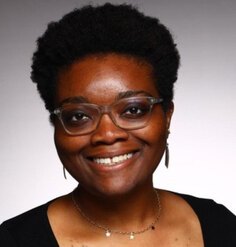5 Questions with Jim Manskey
October 21, 2014
Jim Manskey is President of TBG Partners and works on complex projects ranging from mixed-use developments to corporate campuses and high-end resorts. He has 35 years of experience and has been an integral part of TBG leadership since 1997, serving as a Principal before becoming President in 2014. Under Jim’s leadership, TBG has continued to expand its presence in new markets, experience steady growth and explore new project sectors.
What are you drawing inspiration from right now?
Our firm is focused on creating memorable places, regardless of context (urban, suburban, resort, etc.). Within that purpose, I am inspired by the confluence of an ever-changing demographic — dominated, it seems, by millennials and aging baby boomers on two ends of the social spectrum — and for the first time, we are seeing four different generational groups all working together in the same office environment. We are constantly seeking to understand the social, cultural and historic needs of each generation while also ensuring that responses to these needs are in alignment with the environment as well as market appropriate. It is a challenge that inspires and informs our work.
I also draw inspiration with regard to our firm and our practice from books like Simon Sinek’s Start with Why. It paints a very succinct picture of the benefits of an absolute commitment to a firm’s cultural core — why we do what we do as opposed to what we do and how we do it. It is a perspective that motivates me and also drives much of our thinking and strategic planning as a firm.
What potential for sustainability most excites you on one of your current projects?
Collectively we are excited by the challenges that we as a nation and world are facing regarding our natural resources — in particular, water and the impacts we are witnessing in all areas of our practice. I am excited by the challenges and lessons gained from our master-planned community work, which is a constant reminder of the daily use and ever-growing scarcity of this critical resource. As a profession, we must lead and guide in educating the public on this issue and the scale of housing’s disproportional impact on the environment. This includes creative approaches to stormwater management, water conveyance systems and the consideration for net zero water management strategies.
What do you need to know, but you don’t know right now?
Interesting question. I would welcome at least a one-year notice on when the next recession will hit! Seriously, I would like more empirical data as a profession on the environment and the economic impacts of our work, and the new emerging landscape of this century. The Landscape Performance Series is an excellent resource, but true indicators in terms of tangible impacts, performance, savings, and value add, etc., would solidify our position as a lead profession in the design community. We know intuitively that our work adds value, and in some limited instances there is supporting data, but on a broader scale we need more evidence-based research.
What advice would you give to emerging leaders in the profession?
Be a leader, be involved and be consistent! In addition, one piece of advice I would offer is to consistently stay involved in and positively impact communities in which you live and work. Change starts at the grassroots level and our education and broad experience position us well to influence a range of issues ― including environmental, social, cultural and historic.
Additionally, I always encourage ongoing commitments to our university systems and the Landscape Architectural programs and aligned professions. As a profession, we don’t do enough! We need to lead and demonstrate that our profession has a unique perspective and understanding of our environment and its role in this planet’s future. The opportunity is now, and if we don’t do it, who will? Our work is an artifact of our culture; we must make sure that it has real meaning and elicits awe for all generations.
What challenge would you give to emerging leaders in the profession?
Much to offer here, but I will focus on one specific recommendation: Accept the ever-increasing complexity of our world, and the interconnectedness of worldwide cultures, and seek to forge new and creative partnerships. Look past old models to a new paradigm and bridge to once-unrelated disciplines — disciplines that are non-traditional partners with our profession but that provide a deeper and more holistic response to our changing environment and society. It sounds complicated, but we are the only discipline that is prepared to assume a leadership position in this response if we are really true to our profession and its purpose.
Any opinions expressed in this interview belong solely to the author. Their inclusion in this article does not reflect endorsement by LAF.











